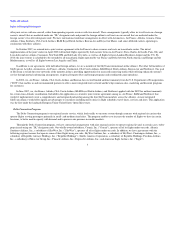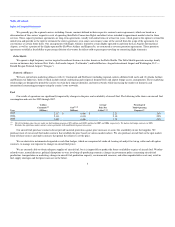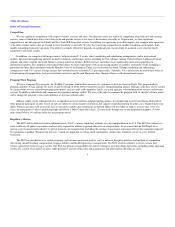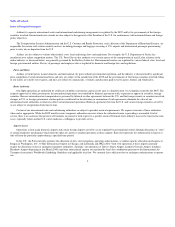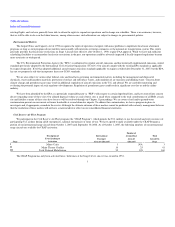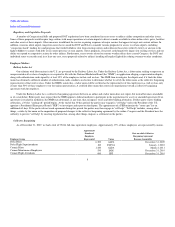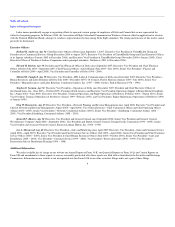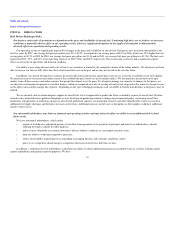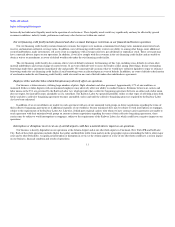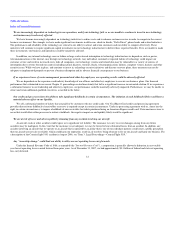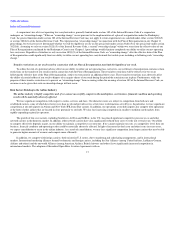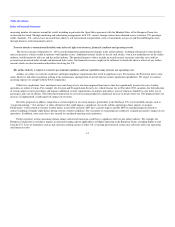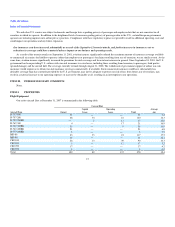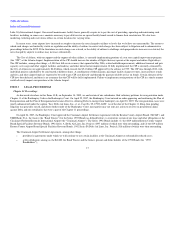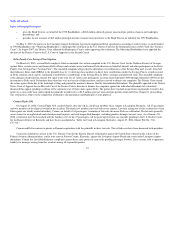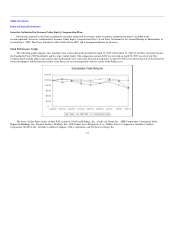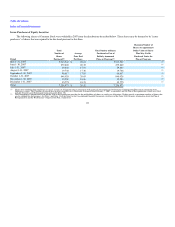Delta Airlines 2007 Annual Report Download - page 18
Download and view the complete annual report
Please find page 18 of the 2007 Delta Airlines annual report below. You can navigate through the pages in the report by either clicking on the pages listed below, or by using the keyword search tool below to find specific information within the annual report.
Table of Contents
Index to Financial Statements
A corporation's use of its net operating loss carryforwards is generally limited under section 382 of the Internal Revenue Code if a corporation
undergoes an "ownership change." When an "ownership change" occurs pursuant to the implementation of a plan of reorganization under the Bankruptcy
Code, the general limitation under section 382 of the Internal Revenue Code may not apply if certain requirements are satisfied under either section 382(l)(5)
or section 382(l)(6) of the Internal Revenue Code. We experienced an "ownership change" in connection with the Plan of Reorganization in our Chapter 11
proceedings, but we have not yet determined whether we will be eligible for or rely on the special rule under section 382(l)(5) or the special rule under section
382(l)(6). Assuming we rely on section 382(l)(5) of the Internal Revenue Code, a second "ownership change" within two years from the effective date of our
Plan of Reorganization confirmed by the Bankruptcy Court in our Chapter 11 proceedings would eliminate completely our ability to utilize our net operating
loss carryovers. Regardless of whether we rely on section 382(l)(5) of the Internal Revenue Code, an "ownership change" after the effective date of the Plan
of Reorganization could significantly limit our ability to utilize our net operating loss carryforwards for taxable years including or following such "ownership
change."
Transfer restrictions on our stock issued in connection with our Plan of Reorganization may limit the liquidity of our stock.
To reduce the risk of a potential adverse effect on our ability to utilize our net operating loss carryovers, our certificate of incorporation contains certain
restrictions on the transfer of our stock issued in connection with the Plan of Reorganization. These transfer restrictions will be effective for two years
following the effective date of the Plan of Reorganization, subject to extension for an additional three years. These transfer restrictions may adversely affect
the ability of certain holders of our stock to dispose of or acquire shares of our stock during the period the restrictions are in place. Furthermore, while the
purpose of these transfer restrictions is to prevent an "ownership change" from occurring within the meaning of section 382 of the Internal Revenue Code, no
assurance can be given that such an ownership change will not occur.
Risk Factors Relating to the Airline Industry
The airline industry is highly competitive and, if we cannot successfully compete in the marketplace, our business, financial condition and operating
results will be materially adversely affected.
We face significant competition with respect to routes, services and fares. Our domestic routes are subject to competition from both new and
established carriers, some of which have lower costs than we do and provide service at low fares to destinations served by us. In particular, we face significant
competition at our hub airports in Atlanta and New York-JFK from other carriers. In addition, our operations at our hub airports also compete with operations
at the hubs of other airlines that are located in close proximity to our hubs. We also face increasing competition in smaller to medium-sized markets from
rapidly expanding regional jet operators.
The growth of low-cost carriers, including Southwest, AirTran and JetBlue, in the U.S. has placed significant competitive pressure on us and other
network carriers in the domestic market. In addition, other network carriers have also significantly reduced their costs over the last several years. Our ability
to compete effectively depends, in part, on our ability to maintain a competitive cost structure. If we cannot maintain our costs at a competitive level, then our
business, financial condition and operating results could be materially adversely affected. In light of increased jet fuel costs and other issues in recent years,
we expect consolidation to occur in the airline industry. As a result of consolidation, we may face significant competition from larger carriers that may be able
to generate higher amounts of revenue and compete more efficiently.
In addition, we compete with foreign carriers, both on interior U.S. routes, due to marketing and codesharing arrangements, and in international
markets. International marketing alliances formed by domestic and foreign carriers, including the Star Alliance (among United Airlines, Lufthansa German
Airlines and others) and the oneworld Alliance (among American Airlines, British Airways and others) have significantly increased competition in
international markets. The adoption of liberalized Open Skies Aviation Agreements with an
13


